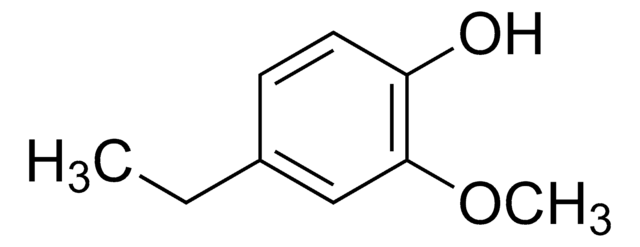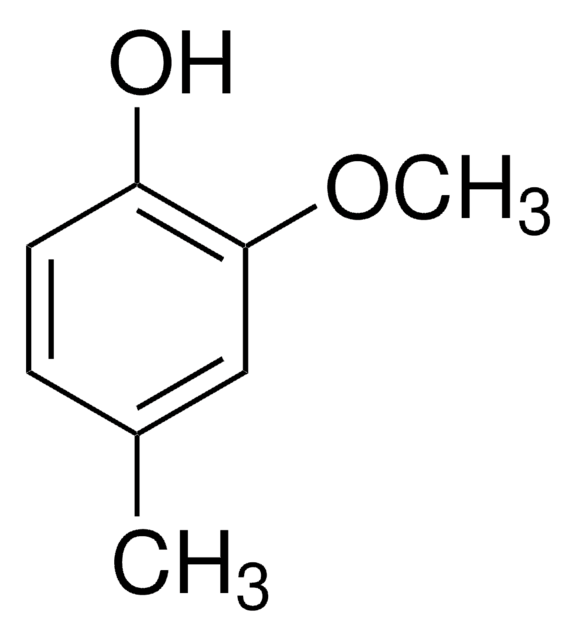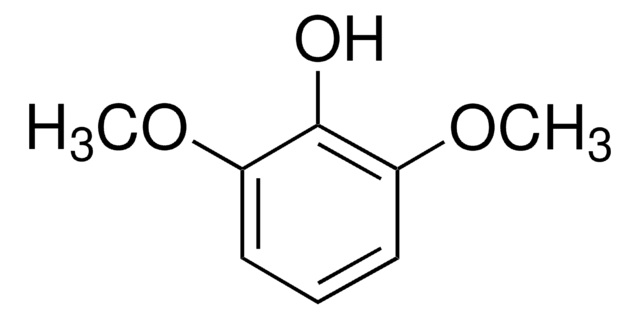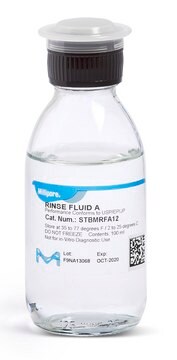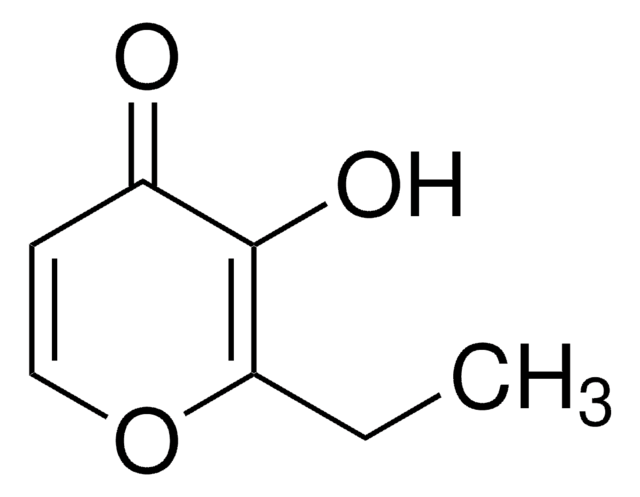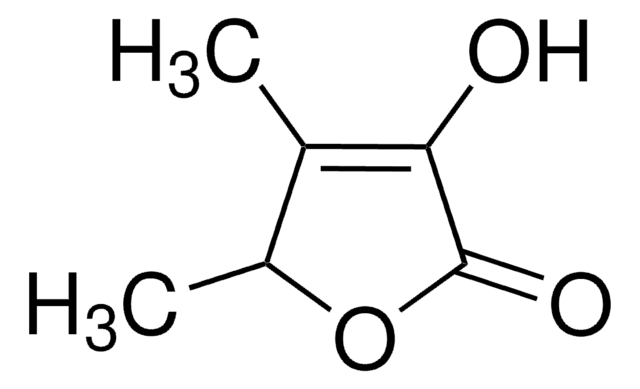W359807
2-Methoxy-4-propylphenol
≥99%, FG
Synonym(s):
4-Propylguaiacol, Dihydroeugenol
About This Item
Kosher
Recommended Products
biological source
synthetic
Quality Level
grade
FG
Kosher
Agency
meets purity specifications of JECFA
reg. compliance
EU Regulation 1334/2008 & 178/2002
Assay
≥99%
refractive index
n20/D 1.522 (lit.)
bp
125-126 °C/14 mmHg (lit.)
density
1.038 g/mL at 25 °C (lit.)
application(s)
flavors and fragrances
Documentation
see Safety & Documentation for available documents
food allergen
no known allergens
Organoleptic
clove; spicy; phenolic; sweet
SMILES string
CCCc1ccc(O)c(OC)c1
InChI
1S/C10H14O2/c1-3-4-8-5-6-9(11)10(7-8)12-2/h5-7,11H,3-4H2,1-2H3
InChI key
PXIKRTCSSLJURC-UHFFFAOYSA-N
Related Categories
General description
Application
Biochem/physiol Actions
Other Notes
Signal Word
Danger
Hazard Statements
Precautionary Statements
Hazard Classifications
Eye Dam. 1 - Skin Irrit. 2 - Skin Sens. 1B - STOT SE 3
Target Organs
Respiratory system
Storage Class Code
10 - Combustible liquids
WGK
WGK 2
Flash Point(F)
235.4 °F - closed cup
Flash Point(C)
113 °C - closed cup
Personal Protective Equipment
Regulatory Listings
Regulatory Listings are mainly provided for chemical products. Only limited information can be provided here for non-chemical products. No entry means none of the components are listed. It is the user’s obligation to ensure the safe and legal use of the product.
FSL
Group 4: Flammable liquids
Type 3 petroleums
Hazardous rank III
Water soluble liquid
JAN Code
W359807-VAR-K:
W359807-1KG-K:4548173979311
W359807-100G:
W359807-SAMPLE:
W359807-1KG:
W359807-100G-K:4548173979304
W359807-BULK-K:
W359807-5KG-K:4548173979328
W359807-SAMPLE-K:
W359807-5KG:
Choose from one of the most recent versions:
Already Own This Product?
Find documentation for the products that you have recently purchased in the Document Library.
Customers Also Viewed
Global Trade Item Number
| SKU | GTIN |
|---|---|
| W359807-1KG | |
| W359807-100G | |
| W359807-100G-K | 4061837862427 |
| W359807-1KG-K | 4061837862434 |
| W359807-5KG | |
| W359807-5KG-K | 4061837862441 |
| W359807-SAMPLE | |
| W359807-SAMPLE-K | 4061837537011 |
Our team of scientists has experience in all areas of research including Life Science, Material Science, Chemical Synthesis, Chromatography, Analytical and many others.
Contact Technical Service
